#1 Philips 3200
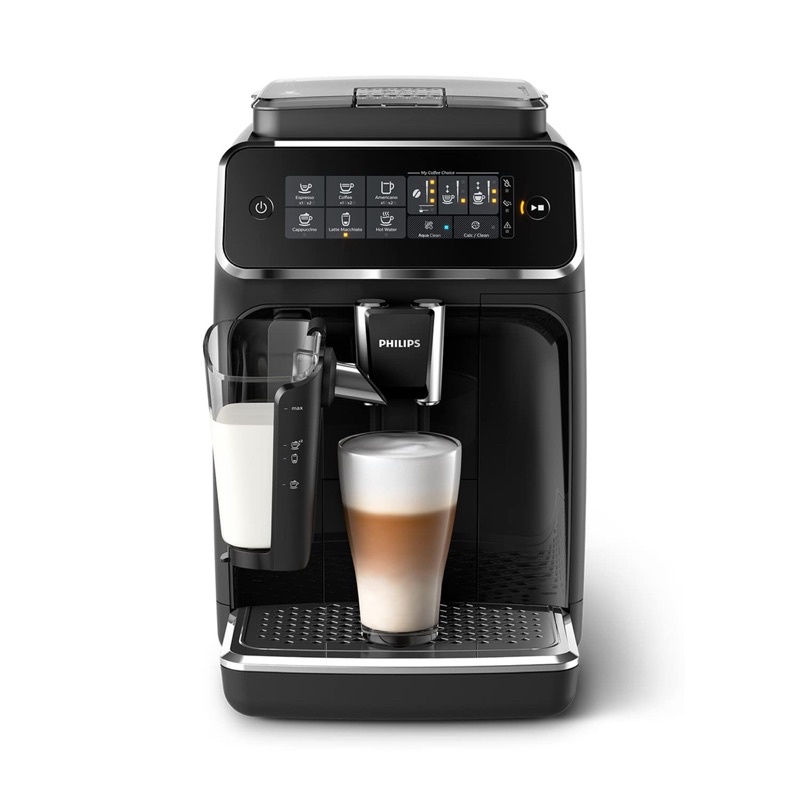
- Easy to use and navigate
- Affordable
- Compact design
#2 Philips 4300
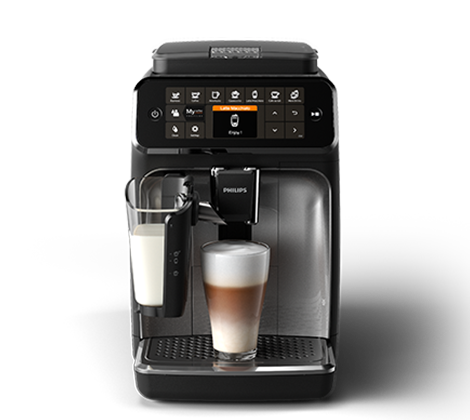
- Wide variety of drinks
- Intuitive touchscreen
- Compact with milk frothe
#3 Philips 5400

- Wide variety of drinks
- Advanced customization
- User profiles
As a daily coffee drinker, finding a machine that meets my needs without overcomplicating my morning routine has always been my top priority. Over the years, I’ve tested many coffee machines, but few have impressed me as much as the Philips LatteGo series. Specifically, the Philips 3200, 4300, and 5400 models each offer something unique, but after using all three, I feel that the Philips 3200 strikes the best balance. It’s practical, easy to use, and produces consistently great coffee. While the 4300 and 5400 have their own strengths, the Philips 3200 stands out as the ideal choice for someone like me, who values simplicity without sacrificing quality.
Daily Convenience: Philips 3200 vs 4300 vs 5400
When it comes to a coffee machine, I’m always looking for something that simplifies my day-to-day routine. The Philips 3200 vs 4300 vs 5400 lattego review does just that. It takes minimal time to set up each morning, and the intuitive control panel means I don’t need to navigate a maze of settings just to get my coffee. Whether I’m in the mood for a simple espresso or a frothy cappuccino, the process is straightforward.
With the Philips 4300 vs 3200 vs 5400 I noticed that while they offer more customization options, it sometimes feels like too many steps to achieve the same result. The 5400, in particular, caters to those who enjoy tweaking every aspect of their coffee, but for me, I found it slowed down my routine. The Philips 3200, on the other hand, provides everything I need for my coffee fix with minimal fuss, which is a huge win in my book.
Who Should Choose the Philips 3200?
I think the Philips 3200 vs 4300 vs 5400 comparisonis perfect for someone who wants excellent coffee without needing to be a barista to operate the machine. I don’t have the time or patience to fiddle with dozens of settings every morning, and I suspect most people feel the same. This machine offers the right amount of customization—just enough to make sure you’re getting your coffee the way you like it, but not so much that it becomes overwhelming.
For households with multiple coffee drinkers who all have different preferences, the Philips 4300 might be a better option because of its ability to store user profiles. This could be useful if everyone wants their coffee slightly different. However, if you’re like me and only need a few simple but effective choices, the 3200 hits the sweet spot.
My Experience with Milk Frothing: Philips 3200 vs 4300 vs 5400
I’ve always been a fan of lattes and cappuccinos, so a good milk frother is essential. The LatteGo system used in all three machines is hands down one of the best I’ve come across. With the Philips 3200, I found the frothing system to be quick, efficient, and incredibly easy to clean. After using the machine for several months, I can confidently say that the froth quality is consistent and the cleaning process never feels like a chore. This is something I deeply appreciate in my busy life.
The Philips 4300 vs 3200 vs 5400 espresso machine review both feature the same milk frothing system, but the additional customization options in the 5400 allow you to tweak the milk texture more precisely. While this is great if you’re particular about your milk texture, I’ve found that the Philips 3200 delivers exactly what I need without any additional tweaking. It gets the job done beautifully with minimal effort.
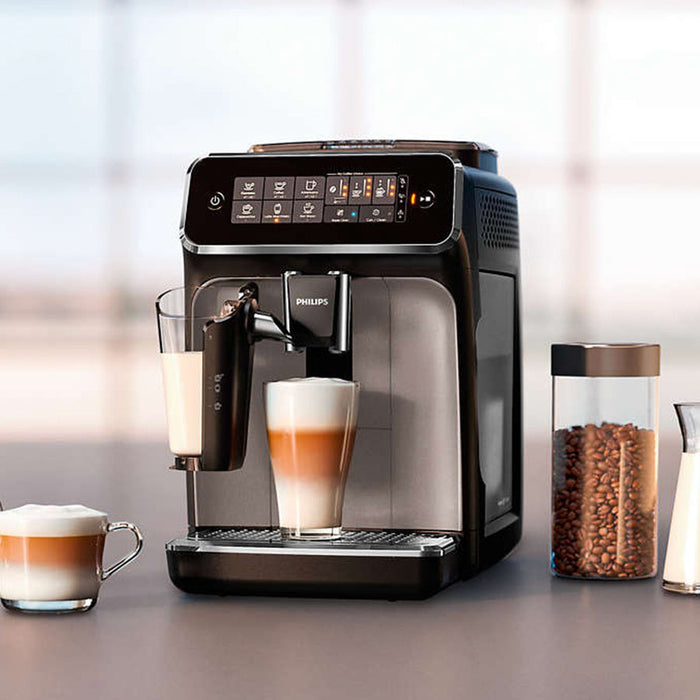
Ease of Use: Philips 3200 vs 4300 vs 5400
One of the most important aspects of any coffee machine is ease of use. No one wants to fumble around with complicated settings or buttons, especially when all you want is a quick cup of coffee in the morning. After using all three machines, I found the Philips 3200 vs 4300 vs 5400 lattego review to be the most intuitive. Its user interface is simple and straightforward, with clearly labeled buttons for each type of coffee. Whether you’re making a cappuccino or an espresso, it’s all just a button press away.
The Philips 4300 and 5400, while offering more features and customizations, tend to complicate the process a little more than necessary. The extra settings and options can be overwhelming if you’re just looking for a quick and easy coffee experience. If you’re someone who likes to tweak every detail of your coffee, you might appreciate the additional options on the Philips 5400, but for the average user, the 3200 strikes the perfect balance between functionality and simplicity
Coffee Quality: Philips 3200 vs 4300 vs 5400
Ultimately, the coffee quality is what matters most. In my experience, the Philips 3200 vs 4300 vs 5400 comparison produces consistently great-tasting coffee. The espresso is rich and flavorful, and the milk frother creates a perfectly frothy layer for cappuccinos and lattes. The machine’s ceramic grinders ensure that your beans are ground to perfection, providing a fresh and aromatic cup every time.
The Philips 4300 vs 3200 vs 5400 espresso machine review also deliver excellent coffee, but I noticed a slight difference in taste with the 5400’s more advanced settings. While the 5400 allows you to fine-tune every aspect of the brewing process, including coffee strength and milk foam levels, I found that these extra features didn’t necessarily lead to a noticeably better cup of coffee. The Philips 3200, with its preset options, was able to match or even exceed the quality of the coffee from the 4300 and 5400 without the added complexity.
Customization Options: Philips 3200 vs 4300 vs 5400
Customization is where the Philips 4300 and 5400 outshine the 3200, but in my opinion, that’s not necessarily a good thing for everyone. The Philips 3200 offers enough customization for most users—coffee strength, volume, and milk froth levels can all be adjusted. These are the key settings that the average coffee drinker will use on a regular basis.
The Philips 4300 vs 3200 vs 5400 steps up the customization by offering even more options, like the ability to store multiple user profiles. This is great for households with multiple coffee drinkers who prefer different settings. The Philips 5400 takes it even further by offering even more intricate control over brewing parameters. While this might appeal to coffee enthusiasts who want complete control over every cup, I found it to be a bit excessive for my needs. For the majority of users, the simpler customization options of the Philips 3200 are more than sufficient.
Design and Build: Philips 3200 vs 4300 vs 5400
In terms of design, all three machines are sleek and modern, fitting nicely into any kitchen space. The Philips 3200 has a compact design that doesn’t take up too much counter space, which is a big plus if you have a smaller kitchen. The layout of the buttons and the display is clear and easy to navigate.
The Philips 4300 vs 3200 vs 5400 espresso machine review are larger machines, and while they offer more features, they also take up more space. If you have the counter space for it, this may not be an issue, but for those who prefer a more minimalist setup, the Philips 3200 is the better option. Additionally, the 5400 has a more premium look and feel, but this comes with a higher price tag, which may not justify the added features for most users.
Maintenance: Philips 3200 vs 4300 vs 5400
When it comes to maintenance, the Philips 3200 is the clear winner for me. It’s incredibly easy to clean, with the LatteGo milk system being one of the most convenient features. The two-part milk system can be easily disassembled and cleaned under the tap in seconds. There’s no need for extensive cleaning cycles or complicated dismantling, which is something I greatly appreciate in my daily routine.
The Philips 4300 and 5400 also have the LatteGo system, but the added features and complexity of the machines mean there are more parts to clean and maintain. While they both have automatic cleaning functions, I found the simpler design of the Philips 3200 to be much less of a hassle. If you value ease of maintenance, the Philips 3200 is the best choice.
Price: Philips 3200 vs 4300 vs 5400
Price is always a key factor in any purchasing decision, and this is where the Philips 3200 really shines. It offers excellent value for money, providing high-quality coffee, ease of use, and a compact design at a much more affordable price point than the 4300 and 5400.
The Philips 4300 is priced higher, and while it offers more features, I didn’t find those features necessary for my day-to-day coffee needs. The Philips 5400 is the most expensive of the three, and while it may appeal to serious coffee enthusiasts, it’s not a justified purchase for the average user. The Philips 3200 delivers everything most people need in a coffee machine at a fraction of the price.
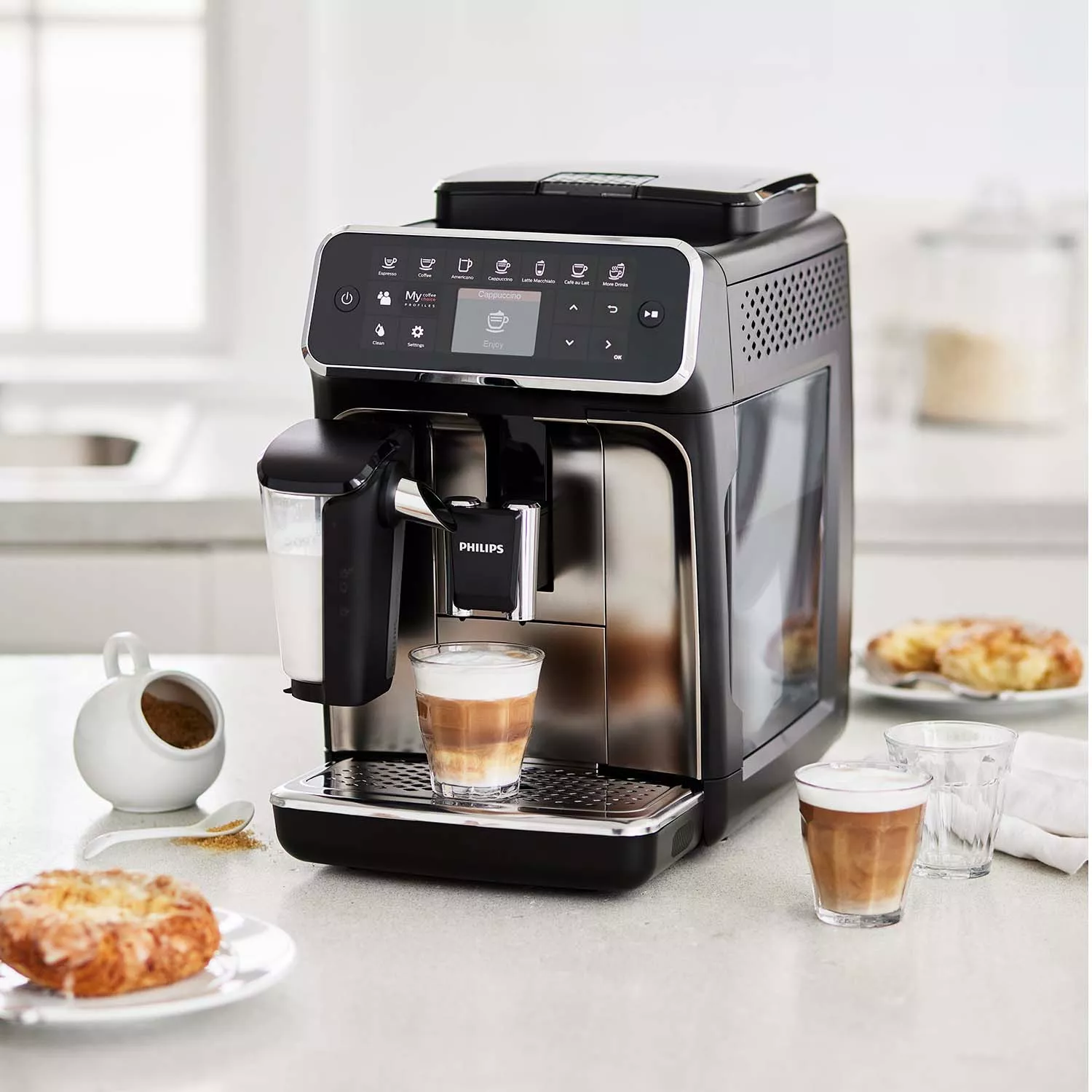
Performance Over Time: Philips 3200 vs 4300 vs 5400
After using these machines for an extended period, I can confidently say that the Philips 3200 has held up the best in terms of performance. It consistently produces high-quality coffee without any noticeable decline in performance. The 4300 and 5400 are also reliable, but their more complex systems have a higher likelihood of requiring maintenance or repairs over time. The simplicity of the Philips 3200 means there’s less that can go wrong, which is a huge advantage if you’re looking for a long-lasting machine.
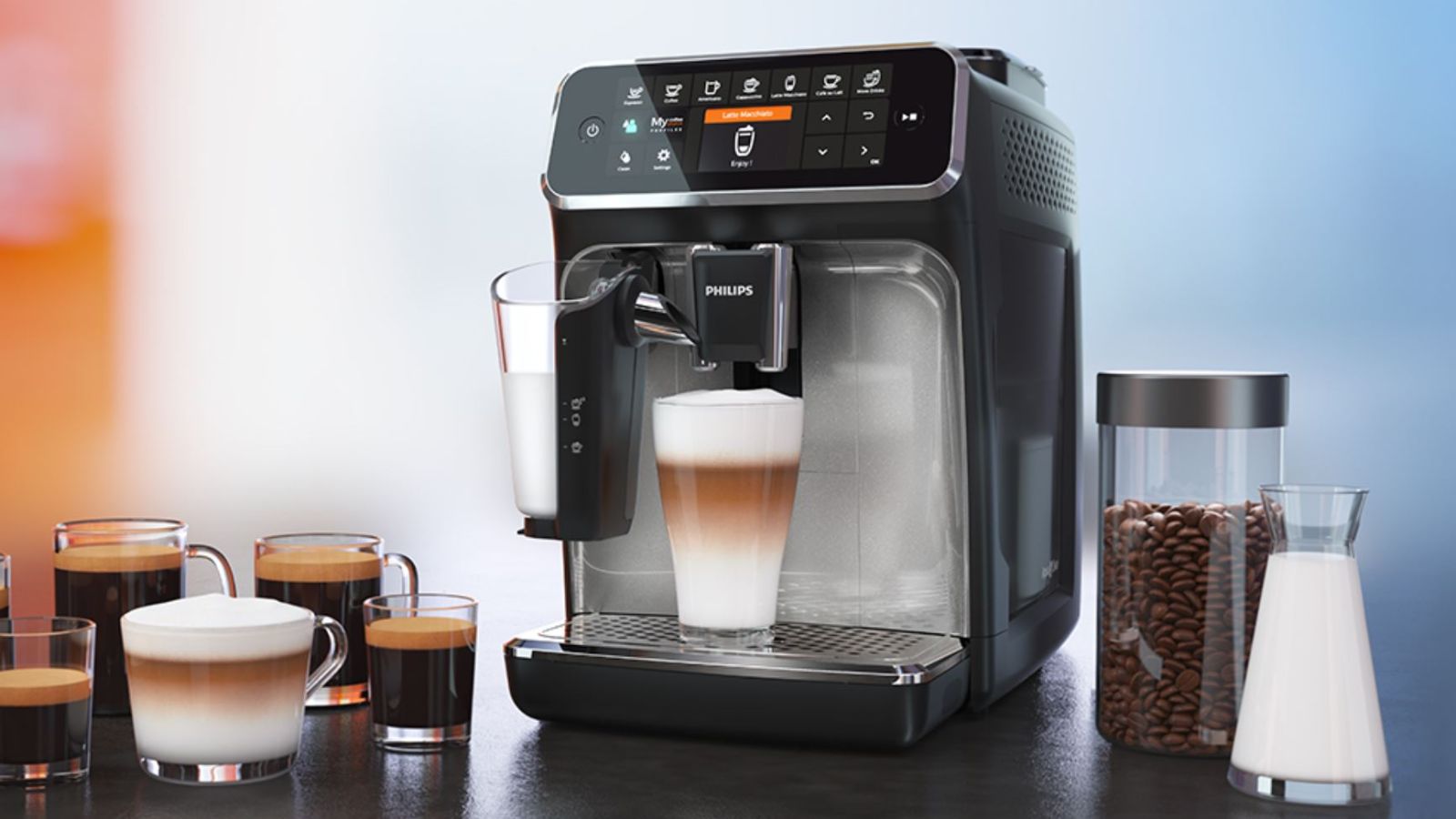
Product Review Conclusion
In conclusion, after comparing the Philips 3200, 4300, and 5400, I firmly believe that the Philips 3200 is the superior product for most users. It strikes the perfect balance between quality, ease of use, and affordability. While the Philips 4300 and 5400 offer more features and customization options, these come at the cost of added complexity and a higher price point, which I don’t believe is necessary for the average coffee drinker.
The Philips 3200 delivers consistently excellent coffee with minimal effort, making it the ideal choice for anyone who wants a reliable, easy-to-use machine that doesn’t break the bank. Its simplicity, combined with the high-quality results it produces, make it the best option in this comparison. Whether you’re an espresso lover or a cappuccino enthusiast, the Philips 3200 will satisfy your coffee cravings with ease.
FAQ
1. What types of coffee can the Philips 3200 make?
The Philips 3200 can brew espresso, coffee, americano, cappuccino, and latte macchiato. It also includes a hot water option for tea or other beverages. With the LatteGo milk system, it’s perfect for making creamy, frothy drinks like cappuccinos and lattes.
2. How does the LatteGo milk system work on the Philips 3200?
The LatteGo milk system is a two-part frothing unit that mixes milk and air at high speed in a frothing chamber, then pours it directly into your cup. It’s easy to detach and clean since it doesn’t have any complicated tubes or parts—just rinse it under the tap or put it in the dishwasher.
3. Can I adjust the strength and temperature of the coffee on the Philips 3200?
Yes, the Philips 3200 allows you to customize your coffee. You can adjust the coffee strength, temperature, and the amount of coffee and milk for each cup. This gives you a lot of flexibility to tailor your drink to your personal preference.
4. How often does the Philips 3200 need to be descaled?
The frequency of descaling depends on how often you use the machine and the hardness of your water. The Philips 3200 features an AquaClean filter, which reduces the need for descaling. With regular use of the AquaClean filter, you may only need to descale the machine after 5,000 cups.
5. Is the Philips 3200 easy to clean and maintain?
Yes, the Philips 3200 is designed for easy maintenance. The LatteGo milk system can be cleaned in seconds by rinsing it under the tap or placing it in the dishwasher. The brew group is removable and can be cleaned by hand, and the machine has automatic cleaning and descaling programs to make regular maintenance hassle-free.
6. Can I use pre-ground coffee with the Philips 3200?
Yes, the Philips 3200 has a bypass doser that allows you to use pre-ground coffee. This is particularly useful if you want to make decaffeinated coffee or switch between different types of coffee beans without changing the grinder settings.
7. How many user profiles can I create on the Philips 3200?
Unlike some higher-end models like the Philips 4300 or 5400, the Philips 3200 does not have the capability to store multiple user profiles. However, it’s still easy to adjust the settings each time you brew a cup based on your personal preference.
8. Does the Philips 3200 come with a built-in grinder?
Yes, the Philips 3200 features a ceramic burr grinder with 12 different grind settings. This ensures that your coffee beans are freshly ground to your desired coarseness for each brew, which enhances the flavor of your coffee.
9. Can I make more than one cup of coffee at a time with the Philips 3200?
Yes, the Philips 3200 can brew two cups of coffee or espresso simultaneously. However, if you're making milk-based drinks like cappuccinos or lattes, it can only prepare one cup at a time due to the milk frothing process.
10. How does the AquaClean filter work?
The AquaClean filter helps prevent limescale buildup in your machine, improving the lifespan and performance of the Philips 3200. When used properly, the filter can extend the time between descaling to up to 5,000 cups. The machine will notify you when the filter needs to be replaced.
